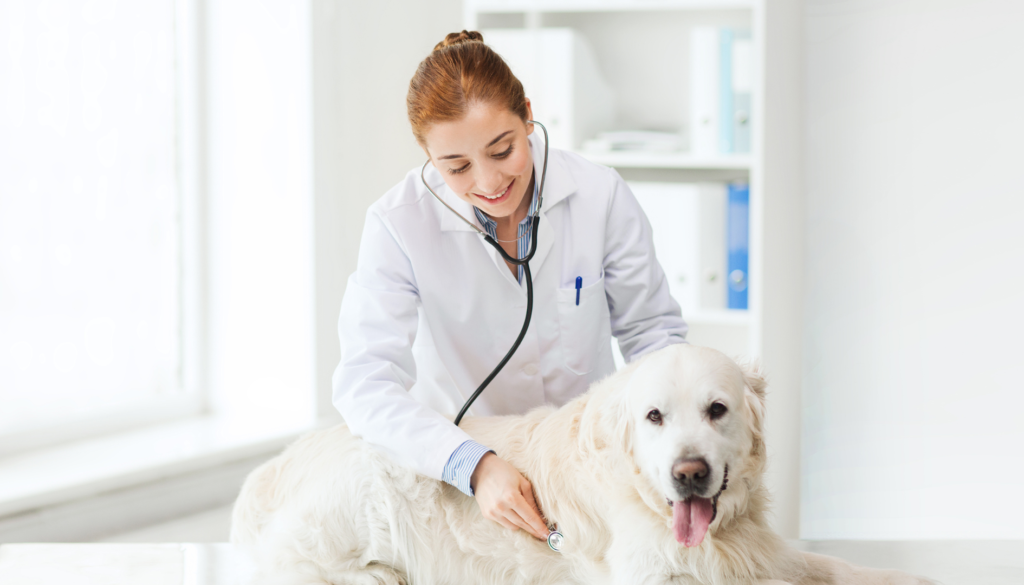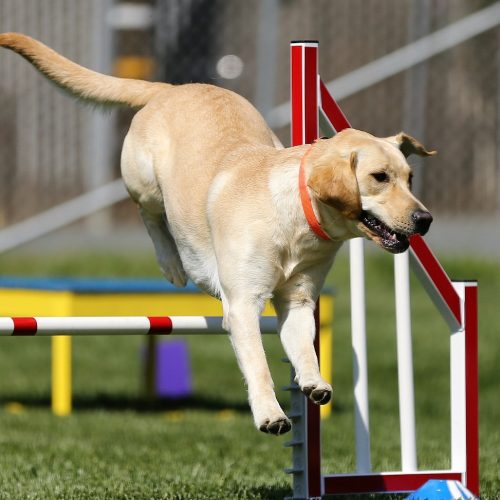Labrador Retrievers are beloved for their friendly nature, intelligence, and versatility. As one of the most popular dog breeds globally, understanding their genetics is crucial for current and prospective owners to ensure these loyal companions remain healthy and happy.
Introduction to Labrador Genetics
The history of the Labrador Retriever traces back to Newfoundland, Canada, where they were initially known as St. John’s dogs. These dogs were bred to assist fishermen in retrieving nets and catching fish that escaped from fishing lines. In the early 19th century, they were brought to England, where their breeding continued, refining the traits we recognize today.

The importance of genetics in Labradors extends beyond mere appearance. Genetics influence their health, behavior, and overall well-being. By understanding genetic factors, breeders and owners can make informed decisions to support the health and longevity of these dogs.
Key Traits of Labrador Retrievers
Labradors are known for their robust physical characteristics. They are medium to large-sized dogs with a strong, muscular build. Their otter-like tail, short, dense coat, and webbed paws make them excellent swimmers.
Behaviorally, Labradors are renowned for their friendly and outgoing nature. They are brilliant and eager to please, making them easy to train and excellent companions for families, hunters, and service work.

Labradors have three primary coat colors: black, yellow, and chocolate. These colors vary in shade, from pale cream to fox red in yellow Labradors and light to dark chocolate. The coat color is determined by specific genetic combinations.
Understanding Labrador Genetics
Basic genetics principles apply to Labradors as they do to other living organisms. Traits are passed from parents to offspring through genes. In Labradors, traits such as coat color, eye color, and even predispositions to specific health conditions are genetically determined.
Common genetic traits in Labradors include coat color, size, and certain health conditions. Selective breeding has played a significant role in shaping the modern Labrador. Breeders select dogs with desirable traits to pass on to the next generation, ensuring the breed remains true to its standard.
While beneficial for maintaining breed standards, selective breeding can sometimes lead to health issues if genetic diversity is not maintained. Responsible breeders focus on genetic health and diversity to prevent inherited conditions.
Inherited Conditions in Labradors
Hip dysplasia is a common inherited condition in Labradors. It involves abnormal hip joint development, leading to arthritis and pain. Regular veterinary check-ups and maintaining a healthy weight can help manage this condition.
Elbow dysplasia is another genetic issue affecting Labradors. It involves developmental abnormalities in the elbow joint, causing pain and lameness. Surgical intervention may be necessary in severe cases.
Progressive retinal atrophy (PRA) is an inherited eye condition that can lead to blindness. Early detection through genetic testing allows for better management of the condition, although there is no cure.
Exercise-induced collapse (EIC) is when affected dogs experience muscle weakness and collapse after intense exercise. Genetic testing can identify carriers of this condition, allowing breeders to make informed decisions.
Centronuclear myopathy (CNM) is a genetic muscle disorder that affects Labradors, leading to muscle weakness and poor muscle tone. Identifying carriers through genetic testing helps in managing breeding practices.
Health Considerations for Labrador Owners
Regular veterinary check-ups are essential for early detection and management of health issues in Labradors. Preventive care, including vaccinations and parasite control, is vital in maintaining their health.
A balanced diet is crucial for Labradors to prevent obesity, a common issue in the breed. Owners should provide high-quality, nutritionally balanced food and avoid overfeeding.
Labradors require regular exercise to maintain their physical and mental health. Daily walks, playtime, and activities like swimming or fetching are ideal to keep them fit and engaged.
Genetic Testing for Labradors
Genetic testing offers numerous benefits for Labrador owners and breeders. It helps identify carriers of genetic disorders, allowing for informed breeding decisions and better health management.
Various genetic tests are available for Labradors, including tests for hip dysplasia, PRA, EIC, and CNM. These tests involve a simple cheek swab or blood sample and provide valuable information about the dog’s genetic makeup.
Interpreting genetic test results requires understanding the difference between carriers and affected dogs. A carrier may not show symptoms but can pass the condition to offspring, while an affected dog exhibits symptoms of the genetic disorder.
Ethical Breeding Practices
Responsible breeding is paramount for the health and well-being of Labradors. Ethical breeders focus on producing healthy puppies with sound temperaments, adhering to breed standards, and avoiding genetic disorders.
Avoiding inbreeding is crucial to maintaining genetic diversity and reducing the risk of inherited conditions. Breeders should use genetic testing to ensure a diverse gene pool and prevent health issues.
Genetic diversity is essential for the overall health of the breed. It helps in reducing the prevalence of genetic disorders and supports the long-term viability of Labradors.
Labrador Temperament and Personality
Labradors are known for their social nature. They thrive on human interaction and are happiest when part of a family. Their friendly demeanor makes them excellent therapy dogs and companions for children.
Labradors are known for their intelligence and trainability. They excel in obedience training and can learn a variety of tasks, making them ideal service dogs for individuals with disabilities.
Labradors are highly compatible with families due to their gentle and patient nature. They are protective yet friendly, making them excellent watchdogs and loyal family members.
Training and Socialization of Labradors
Early socialization is critical for Labradors’ development into well-rounded dogs. Exposure to different environments, people, and other animals helps them grow into confident and adaptable adults.

Training tips for Labradors include using positive reinforcement techniques such as treats and praise. Consistency and patience are essential for successful training.
Addressing behavioral issues promptly is crucial. Common problems such as chewing, digging, and jumping can be managed through proper training and providing appropriate outlets for their energy.
Diet and Nutrition for Labradors
Labradors’ nutritional needs vary based on age, weight, and activity level. However, a diet rich in protein, healthy fats, and essential vitamins and minerals is necessary for their overall health.
Common dietary issues in Labradors include obesity and food allergies. Monitoring their weight and avoiding food allergens can help manage these issues.
Recommended feeding practices include dividing their daily food intake into two meals and avoiding overfeeding. It is crucial to provide fresh water and ensure a balanced diet tailored to their needs.
Exercise and Activity Requirements
Labradors’ daily exercise needs are high due to their active nature. They require at least an hour of physical activity daily to maintain their health and prevent behavioral issues.
Walking, running, swimming, and fetching are suitable activities for Labradors. These activities keep them physically fit and mentally stimulated.
Mental stimulation is equally essential for Labradors. Interactive toys, puzzle feeders, and training sessions help keep their minds sharp and prevent boredom.
Common Health Issues in Labradors
Recognizing signs of illness in Labradors is crucial for early intervention. Symptoms such as lethargy, loss of appetite, and changes in behavior should prompt a visit to the veterinarian.
Preventative healthcare, including regular check-ups and vaccinations, is vital in maintaining their health. Parasite control and dental care are also essential aspects of their overall care.
Emergency care for Labradors involves knowing when to seek immediate veterinary attention. Situations such as sudden collapse, severe pain, or difficulty breathing require urgent medical intervention.
Caring for Senior Labradors
Adjusting diet and exercise for senior Labradors is necessary to accommodate their changing needs. A diet formulated for senior dogs and moderate exercise help maintain their health.
Labradors’ senior health concerns include arthritis, dental issues, and vision problems. Regular veterinary visits and appropriate care can help manage these conditions.
Ensuring comfort in old age involves providing a supportive bed, maintaining a consistent routine, and offering gentle exercise to keep them active and comfortable.
Labrador Grooming Needs
Coat care for Labradors involves regular brushing to remove loose hair and prevent matting. Bathing should be done as needed to keep their coat clean and healthy.
Nail trimming and dental care are essential aspects of Labrador grooming. Regular nail trimming prevents overgrowth and discomfort, while dental care helps maintain oral health.
Due to Labradors’ dense coats, managing shedding can be challenging. Regular grooming and using appropriate tools can help control shedding and keep the coat in good condition.
Labrador Lifespan and Aging
The typical lifespan of a Labrador is around 10 to 14 years. Factors affecting longevity include genetics, diet, exercise, and overall healthcare.
Quality of life considerations involve providing proper nutrition, regular exercise, and preventive healthcare to ensure a healthy and fulfilling life for Labradors.
Conclusion
In conclusion, understanding Labrador genetics, key traits, and health considerations is essential for owners and breeders. By focusing on responsible breeding, regular health check-ups, and proper care, we can ensure that Labradors remain healthy and happy companions for years.
FAQs
What are the common genetic issues in Labradors?
Common genetic issues in Labradors include hip dysplasia, elbow dysplasia, progressive retinal atrophy, exercise-induced collapse, and centronuclear myopathy.
How can I ensure my Labrador stays healthy?
Ensure regular veterinary check-ups, provide a balanced diet, exercise regularly, and monitor for any signs of illness.
Is genetic testing necessary for my Labrador?
Genetic testing can identify carriers of genetic disorders, helping make informed breeding and health management decisions.
What should I feed my Labrador?
Provide a high-quality, nutritionally balanced diet tailored to their age, weight, and activity level. Avoid overfeeding to prevent obesity.
How much exercise does a Labrador need?
Labradors require at least an hour of daily physical activity, including walks, runs, swimming, and fetching.
What should I expect as my Labrador ages?
As Labradors age, they may experience conditions like arthritis and dental issues. Adjusting their diet, exercise, and regular veterinary care helps manage these changes.









